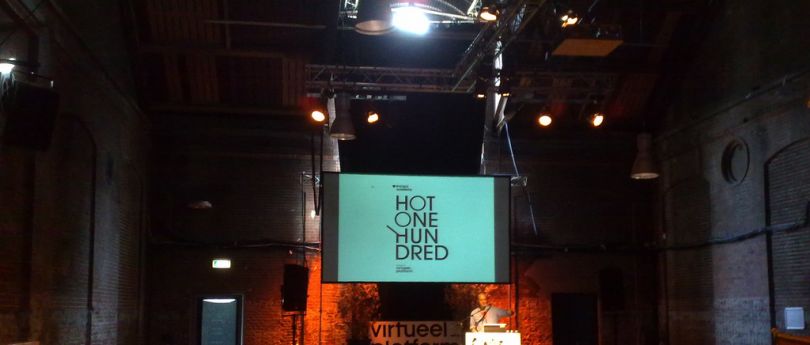Kennis /
Verslag PICNIC Academy Hot100 2009

Picnic Academy HOT100 2009
— A report of the PICNIC Academy Hot100 2009. What happens when the best and brightest new media students in the Netherlands are brought together for a day of “real world” hot housing?
The next speaker Dr Rachel Armstrong stood as symbol for how extraterrestrial the intersection between technology and the arts can be. As medical doctor, media producer, science-fiction author and architect, this TED fellow rates as the ultimate interdisciplinarian. For example, she helped performance artist Stelarc get a human ear with Bluetooth technology implanted on his forearm.
Her main message was that “we are all polymaths—just like our mothers—but unfortunately we are culturally trained to be specialists.” While despairing over the fact that there is no single centre of higher education that has an interdisciplinary department, she does observe it occurring naturally with new media studies. “These students are working in a different framework than their academic institutions owing to the inherent connectivity of the digital platform. They are more used to sharing and problem solving collectively and these are valuable skills that will transfer into industry.”
Armstrong concluded with showing films of worm-like “protocells” that she hopes will be used to solidify the rotting foundations of Venice and save it from sinking into oblivion. Jaws dropped. “And yes,” she said, “I also believe there is a solution for global warming.”
WORKING IN THE REAL WORLD
In
the afternoon the students were split up into six different workshops
based on “real world” challenges set forward by different leading Dutch
companies and cultural organisations. For instance, the Mediafonds sought a fresh way to improve the accessibility of spoken word online. The “do-tank” ButterflyWorks wanted
advice on translating a board game that works for conflict resolution
without violence in Kenya, to a mobile phone version. While GuestHost are developing a navigation tool for Germany’s Ruhr region when it’s the Cultural Capital of Europe in 2010.
The sustainable architecture bureau 2012Architects, renowned for turning car windscreens into shelving and washing machines into mobile studios, wanted the students to think about an online tool to “reorganise urban waste streams into sustainable cycles”. The students later presented their “Greenwasher Project” which described a website where companies can anonymously (to avoid the reverse engineering of their products by the competition) put up their waste products for sale. As Kuitenbrouwer summarised it: “Ah, so it’s an eBay for waste!”
Public broadcasters VPRO sought to improve the browsing experience of their Open City Archive of over 300 videos. One group came up with a “4D tagging/locative media” approach where the browser would offer particular films based on the motion of the user: whether they were walking down a street, wandering a museum or taking public transport. Kuitenbrouwer was visibly impressed: “It’s actually a new way with wider implications.”
The film and arts festival Impakt desired to enhance a sense of community in their audiences. Dr Armstrong sat in on one of these workshops and cited it as her day’s single most inspiring moment. “It was amazing to hear the fluid exchange of thought processes through group cooperation. Also they were completely natives to the digital world! It was like their ‘other’ language. They could also effortlessly imagine what a collective experience is like. I was very impressed by the combination of experience, expertise, imagination and intuition that the students used to reach an outcome where “mood-indicating” wrist bands were able to change the colour of a communal space.”
Meanwhile another group within this workshop decided to keep things simple: make a blog. With Impakt’s long history, the organisation already has the network and footage to create a rich database of images and experience. As the student who presented it said: “You don’t need to be groundbreaking every time.”
Indeed. At the end of the day it’s just about sharing. And sharing seems to work. According to Kuitenbrouwer a week after the event, several of the ideas generated during the workshops “already have concrete follow-ups”. For many of the participants, the real world has already arrived.
